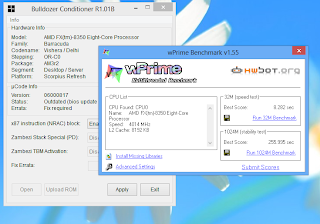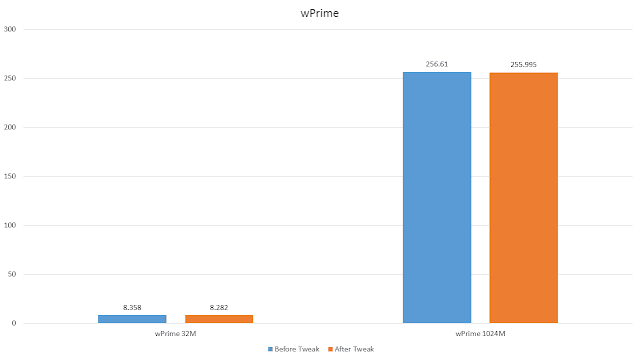PC Wars – Does it really matter?
When it comes to the PC Wars there are many points of comparisons that can be done. At the Graphics end, we have NVIDIA up against AMD. Each manufacturer has got their pros and cons and choosing the right graphics card for your system may be very simple and both graphics chip manufacturers have got the whole market saturated with Graphics Card at different price points. When people ask me to recommend them a graphics card, it’s quite a straightforward affair. Get something that you can afford. In the Graphics Card world the amount of money you pay for is usually the performance you will get.
However, when it comes to choosing a Processor for a new system, things aren’t just as straightforward. Some may argue that Intel is better than AMD in terms of performance but we have to also give the points to AMD for putting products in the affordable price segment. Both platforms target different audiences, and despite AMD losing their competitive edge in the CPU game, we are still finding some reasons that their processors are worth the buy. First and for most, motherboard socket backward compatibility is the core reason why there are still so many hard core AMD fans out there. A motherboard from a few years ago can still probably work with the newest AMD processors in the market, and vice versa. It just makes so much more sense for the budget conscious/long term thinking buyer. On the other hand, we’ve seen Intel changing CPU socket everytime they have a chipset refresh. They’ve changed from LGA1156 to LGA1155 to LGA1150 over the years for their mainstream platforms, and for every new processor you’re going to get, you’ll have to get a new motherboard as well. Of course, it pushes sales for motherboard, but that isn’t really what consumers want.
Another look at AMD’s FX Desktop System with new PCMark 8 Suite
For today, we’re going to take a look at a simple AMD system that is built to last. It will be a system that is powerful enough to drive your applications. Loaded with the newest PCMark 8 benchmark from Futuremark, we put the system to test if it can handle modern day applications and be used as a system for daily usage.
PCMark 8 is a new benchmark which is updated from previous PCMark 7. PCMark 8 simulates various day to day tasks carried out by the PC and the benchmarks gives the system a score. There are a few tests in the benchmarking software suite, namely Home Test, Creative Test, Work Test, Storage Test, Applications test and Battery Life tests. In today’s benchmark, we are going to just focus on Home Test and Creative Test to see an overview of the system we are going to take a look at today.
The PCMark 8 Home benchmark includes workloads that reflect common tasks for a typical home user. These workloads have low computational requirements making PCMark 8 Home suitable for testing the performance of low-cost tablets, notebooks and desktops. Home includes workloads for web browsing, writing, gaming, photo editing, and video chat. The results are combined to give a PCMark 8 Home score for your system.
The PCMark 8 Creative benchmark includes workloads typical for advanced computer users. With more demanding requirements than Home benchmark, this benchmark is suitable for mid-range computer systems. PCMark 8 Creative includes web browsing, photo editing, video editing, group video chat, media transcoding, and gaming workloads. The results are combined to give your PCMark 8 Creative score.
Bring out the best of your AMD system with Software Tweak by The Stilt
The Stilt has been researching on getting better score on Super PI benchmark which uses a older x87 instruction set. He realised that there are features within AMD processors that have been deliberately disabled which could hinder performance in processors which utilizes the instruction set. Thus, he has tasked himself on working on a new tweak to enable the feature in the affected AMD processors so that they can perform better. Even though this largely affects only the older software and programmes, we still enabled the tweak by The Stilt to see if there was any difference in terms of performance scores in PCMark 8. As I am not a computer scientist, not everything in this article may be accurate and may be results of a fluke, but it seems that benchmark results are rather uniform.
The System
The system on our test bed today will be:
- AMD Vishera FX8350 8-Core processor
- ASUS Sabertooth 990FX R2.0
- GSkill PI 1600MHz RAM
- AMD HD7790 Graphics Card
The reason for a FX8350 processor is simply because it was the best bang for the buck performance processor in the market right now. We are getting 8 solid cores from a processor for half the price of the current Intel flagship. We think that this little investment will be worth the money for the long term. We decided to go with a ASUS Sabertooth 990FX because the Sabertooth lineup of motherboard is well known for its stability and reliability, therefore making it the best choice for a long term motherboard as future processors may still be able to use the motherboard. Additionally, it also has an excessive 5 years warranty period, probably the longest we’ve seen for a motherboard.
Results
Conclusion
~Written by Randomizer
For the LATEST tech updates,
FOLLOW us on our Twitter
LIKE us on our FaceBook
SUBSCRIBE to us on our YouTube Channel!











